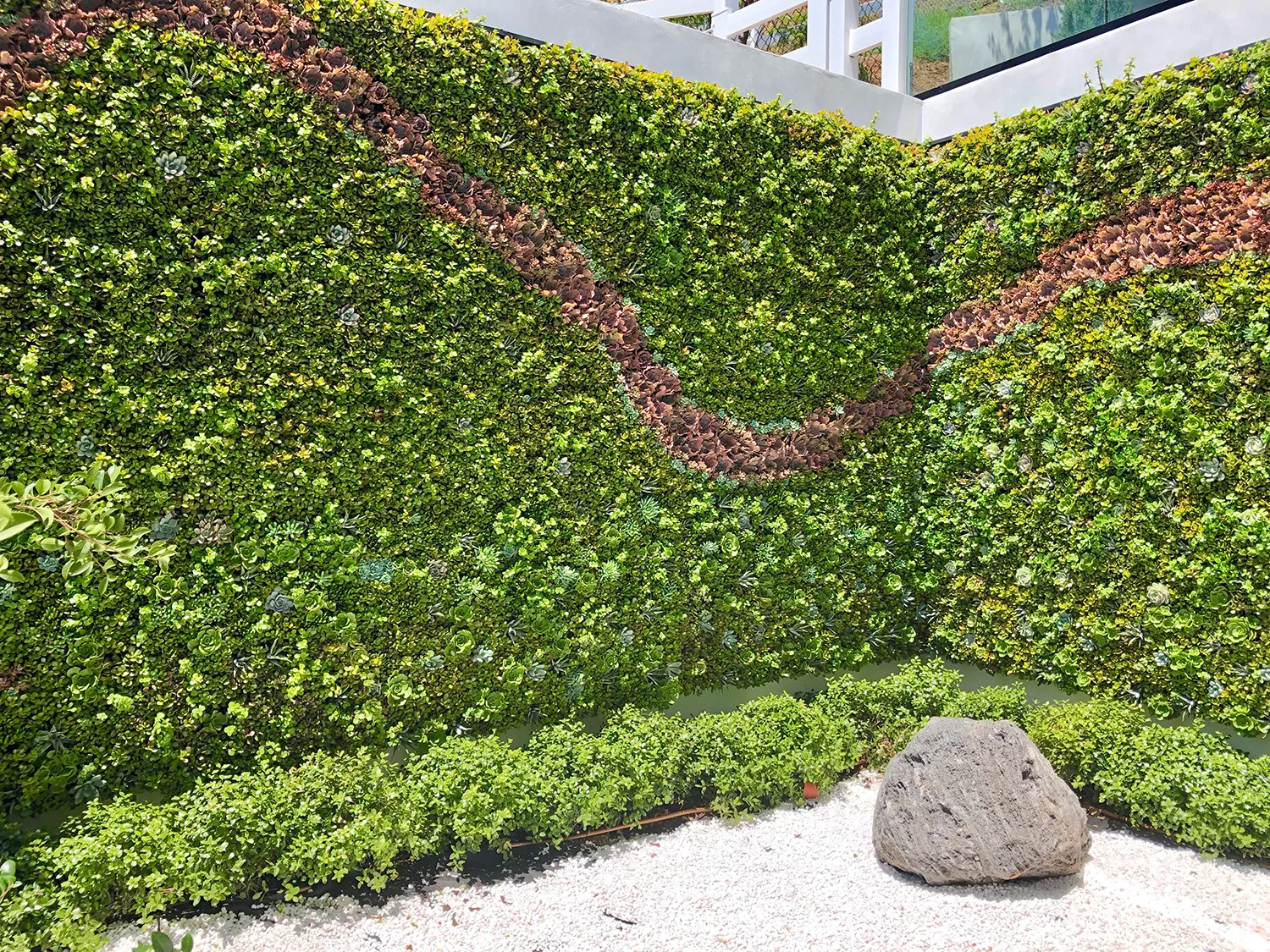The Increasing Demand for Nature-Based Interactions
In an era where urbanization and the concrete jungle dominate our cities, there is a growing need to reconnect with nature. As we strive for sustainable and environmentally conscious urban development, integrating more plants in the form of living walls has emerged as a powerful solution. Living walls, also known as green walls or plant walls, are vertical structures covered in vegetation that offer numerous benefits to our built environment. We will explore why it is essential to embrace green architecture and incorporate living walls into our cities, emphasizing their positive impact on biodiversity and urban ecosystems.
Why Implementing Green Architecture is Crucial
Enhancing Biodiversity
One of the key reasons to integrate living walls into our cities is to promote biodiversity. Urbanization often leads to habitat destruction, fragmentation, and loss of green spaces. Living walls offer a practical and effective way to mitigate these challenges by providing a vertical ecosystem that supports various plant species. These vertical gardens attract pollinators such as bees and butterflies, as well as birds, thereby restoring and diversifying urban wildlife.
Improving Air Quality
The concrete and asphalt surfaces prevalent in urban areas contribute to the heat island effect and poor air quality. Living walls act as natural air filters by absorbing carbon dioxide and releasing oxygen through photosynthesis. Additionally, the plants on living walls capture airborne pollutants, including volatile organic compounds (VOCs) and particulate matter. By incorporating living walls into our cities, we can improve air quality, reduce pollution, and create a healthier environment for residents.
Mitigating the Urban Heat Island Effect
Urban areas are often significantly warmer than surrounding rural regions due to the heat island effect. Concrete and asphalt absorb and radiate heat, contributing to elevated temperatures. Living walls help counteract this effect by providing insulation and shade, reducing surface temperatures, and creating a microclimate around the building. By incorporating green infrastructure, we can mitigate the urban heat island effect and create more comfortable and energy-efficient urban spaces.
Enhancing Aesthetics and Well-being
Beyond their environmental benefits, living walls offer aesthetic value and contribute to overall well-being. These vertical gardens introduce natural elements into the urban landscape, softening the harsh lines of buildings and adding visual interest. Research has shown that exposure to nature and greenery has a positive impact on mental health, reducing stress levels and improving mood. Incorporating living walls into our cities can create soothing and relaxing environments that promote well-being and quality of life.
Promoting Sustainable Design
Living walls are an integral part of green architecture and sustainable design. By integrating vegetation into the built environment, we reduce the reliance on artificial cooling systems, thereby decreasing energy consumption. Living walls also contribute to stormwater management by absorbing rainwater and reducing runoff, which helps alleviate pressure on urban drainage systems. By embracing living walls, we can adopt a holistic approach to urban planning that prioritizes environmental sustainability.
Creating a More Sustainable Future with Living Walls
The integration of living walls into our cities and the built environment represents a significant step toward a more sustainable and nature-centric future. By promoting biodiversity, improving air quality, mitigating the urban heat island effect, enhancing aesthetics, and supporting sustainable design principles, living walls offer a multitude of benefits. As we seek to create resilient and livable cities, embracing green architecture and incorporating more plants in the form of living walls will play a pivotal role in fostering healthier urban ecosystems and improving the overall well-being of residents. Let us embrace these green innovations and work together to create cities that harmoniously blend with nature.




